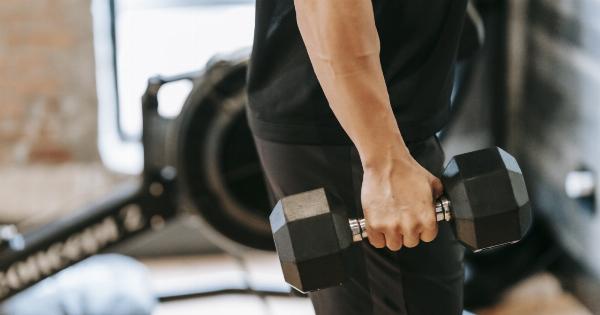When you’re pregnant, maintaining a regular workout routine is not only beneficial for your overall health, but it can also help ease many discomforts associated with pregnancy.
While exercise during pregnancy can strengthen your muscles, improve your posture, and reduce back pain, incorporating specific breathing exercises into your workout routine can take these benefits to a whole new level. In this article, we’ll explore why breathing exercises are essential during pregnancy and how they can enhance your overall well-being.
The Importance of Breathing During Pregnancy
Breathing is an involuntary action that we often take for granted. However, during pregnancy, your body undergoes numerous changes that can affect your breathing patterns.
The growing uterus puts pressure on your diaphragm, reducing its range of motion, and causing shortness of breath or rapid breathing. Additionally, hormonal changes can lead to increased blood volume and heart rate, which further impacts your breathing.
Incorporating specific breathing exercises into your pregnancy workout routine can help you adapt to these changes, improve lung capacity, and provide a variety of other benefits.
Benefits of Breathing Exercises during Pregnancy
1. Relaxation: During pregnancy, your body undergoes significant physical and emotional changes. Practicing breathing exercises, such as deep belly breathing, can help you relax and manage stress.
Deep inhalation and exhalation calm the body and activate the parasympathetic nervous system, which promotes a sense of calm and well-being.
2. Increased Oxygen Flow: Deep breathing techniques enhance oxygen delivery to your muscles and vital organs, compensating for the increased demands of pregnancy. Adequate oxygen supply can increase energy levels and combat fatigue.
3. Improved Posture: As your baby grows, your center of gravity shifts, and your posture may suffer.
Breathing exercises, especially those focusing on core activation, can help you maintain better posture, relieve strain on your lower back, and prevent or reduce back pain.
4. Strengthened Pelvic Floor: The pelvic floor muscles play a crucial role during pregnancy and childbirth. Regular breathing exercises can strengthen these muscles, reducing the risk of incontinence and supporting the weight of your baby.
Strong pelvic floor muscles also aid in postpartum recovery.
5. Better Circulation: Pregnancy hormones can lead to increased blood volume and swelling. Proper breathing techniques, particularly deep diaphragmatic breathing, stimulate blood flow, improving circulation and reducing swelling in the feet and ankles.
6. Enhanced Concentration and Focus: Pregnancy brain fog is a common occurrence due to hormonal changes and lack of sleep. Breathing exercises increase oxygen flow to the brain, promoting mental clarity, concentration, and overall cognitive function.
7. Bonding with Your Baby: Incorporating breathing exercises into your pregnancy workout routine allows for a quiet and mindful moment to connect with your baby.
By focusing on your breath, you create a space for bonding and nurturing your relationship with your growing child.
Types of Breathing Exercises for Pregnancy
There are several breathing exercises specifically designed for pregnant women. Here are a few effective techniques you can incorporate into your pregnancy workout routine:.
1. Deep Belly Breathing:
Find a comfortable seated position or lie down on your side. Place one hand on your chest and the other on your belly. Take a deep breath in through your nose, letting your belly rise as much as possible.
Exhale slowly through pursed lips, allowing your belly to sink. Repeat this pattern for a few minutes, focusing on the rise and fall of your belly.
2. Ujjayi Breathing:
Sit in a comfortable position or use a prenatal yoga pose. Close your eyes and take a deep breath in through your nose. As you exhale, slightly constrict the back of your throat, making a gentle “ha” sound.
Repeat this breathing technique for several rounds, focusing on the audible sound and smoothness of your breath.
3. Alternate Nostril Breathing:
Sit in a cross-legged position or comfortably in a chair. Using your right hand, bring your index and middle fingers to rest between your eyebrows. Gently close your right nostril with your thumb and inhale deeply through your left nostril.
Release your right nostril and close your left nostril with your ring finger, exhaling slowly through your right nostril. Repeat this sequence for a few minutes, alternating nostrils with each breath.
4. Box Breathing:
Sit in a comfortable position and close your eyes. Inhale deeply through your nose as you count to four. Hold your breath for a count of four. Exhale slowly through your nose for a count of four. Hold your breath again for a count of four.
Repeat this sequence for several rounds, focusing on the counting and maintaining a steady rhythm.
Incorporating Breathing Exercises into Your Pregnancy Workout Routine
Now that you understand the benefits and types of breathing exercises for pregnancy, it’s time to incorporate them into your workout routine. Here are a few tips to help you get started:.
1. Begin Slowly:
If you’re new to breathing exercises, start slowly and gradually increase the duration and intensity. Listen to your body and do what feels comfortable and beneficial.
2. Choose the Right Time:
Find a time of day that works best for you to practice breathing exercises. You can incorporate them before or after your regular workouts or choose a separate dedicated time for relaxation and deep breathing.
3. Combine with Other Exercises:
Consider combining breathing exercises with gentle prenatal yoga, swimming, or walking. These exercises support overall well-being and provide additional benefits for your pregnancy journey.
4. Focus on Mindfulness:
During your breathing exercises, bring your attention to the present moment. Be mindful of your breath, sensations in your body, and the connection with your baby. It can be a powerful tool for relaxation and bonding.
Conclusion
Incorporating breathing exercises into your pregnancy workout routine can offer immense benefits for both you and your baby. From relaxation and increased oxygen flow to improved posture and strengthened pelvic floor, the advantages are numerous.
Explore different breathing techniques, find what works best for you, and make it an essential part of your overall health and wellness during pregnancy. Remember, always consult with your healthcare provider before starting any new exercise program during pregnancy.































